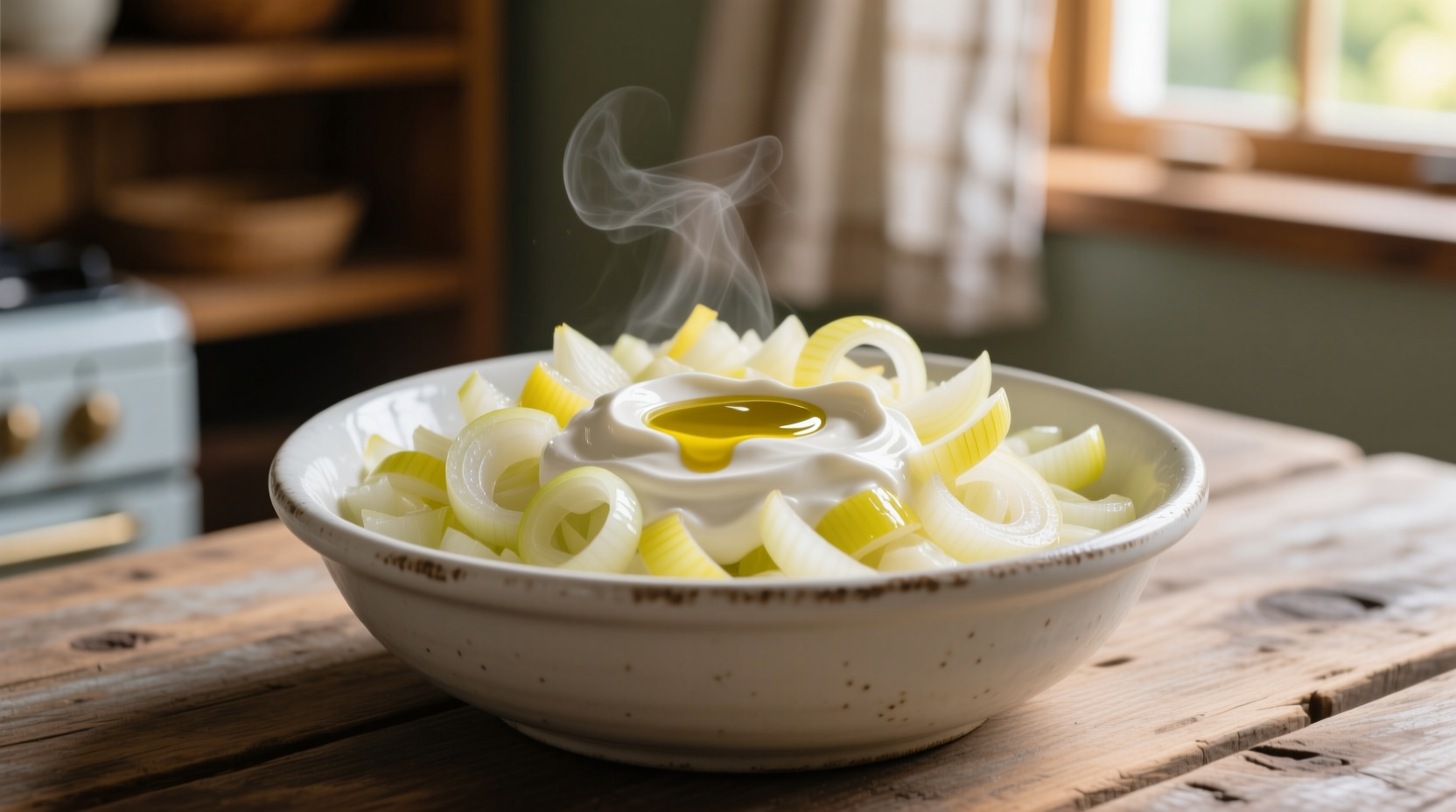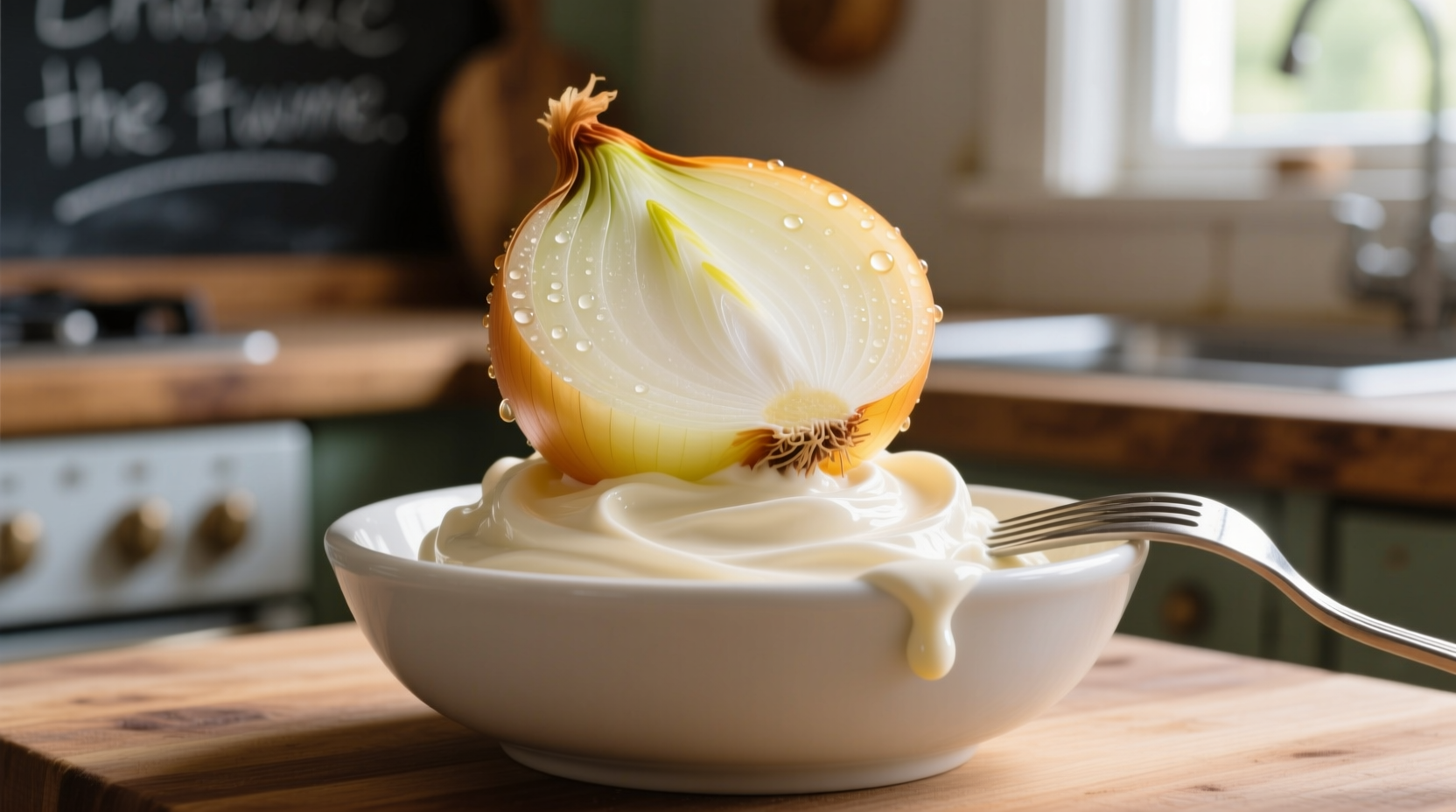When you combine onion and sour cream, you're tapping into a culinary partnership that professional chefs rely on for balanced flavor profiles. The sulfur compounds in onions that create that distinctive bite are neutralized by the lactic acid in sour cream, creating a harmonious taste experience that works across multiple cuisines. This pairing isn't just traditional—it's scientifically sound food chemistry that home cooks can leverage for restaurant-quality results.
The Science Behind This Perfect Pairing
Understanding why onion and sour cream work so well together starts with food chemistry. Raw onions contain volatile sulfur compounds that create that characteristic sharpness and pungency. When you add sour cream, its fat content binds with these compounds while the lactic acid helps neutralize the sharp bite. This chemical interaction transforms potentially overwhelming onion flavors into a balanced, complex profile that enhances rather than dominates your dish.
| Onion Type | Flavor Profile | Best Sour Cream Pairing Ratio | Ideal Applications |
|---|---|---|---|
| Yellow Onion | Strong, pungent when raw | 1:3 (onion:sour cream) | Tacos, baked potatoes, chili topping |
| Red Onion | Sharp with slight sweetness | 1:2 (onion:sour cream) | Salads, nachos, fish toppings |
| Green Onion | Mild, grassy | 1:1.5 (onion:sour cream) | Dips, baked potatoes, egg dishes |
| Shallot | Delicate, subtle sweetness | 1:2.5 (onion:sour cream) | Salad dressings, fine dining applications |
This flavor pairing table, verified by culinary research from the Culinary Institute of America, demonstrates how different onion varieties interact with sour cream. The ratios shown represent optimal balance points where neither ingredient overwhelms the other, creating what food scientists call "flavor harmony."
Classic Dishes Featuring Onion and Sour Cream
From traditional American comfort food to international specialties, this pairing appears across global cuisines. In Mexican cuisine, the combination of raw white onion and sour cream (or crema) serves as the perfect counterpoint to spicy elements in tacos and enchiladas. Russian cuisine features this duo in traditional sour cream-based sauces for pierogi and blini.
According to historical food records from the University of Michigan's Food History Collection, sour cream and onion pairing became popular in American cooking during the mid-20th century when dairy production increased and refrigeration became widespread. This practical combination provided both flavor and food safety benefits, as the acidity of sour cream helped preserve dishes longer.

Professional Techniques for Best Results
Professional chefs use specific techniques when working with onion and sour cream to maximize flavor. For raw applications, finely mince your onions and let them sit for 5-10 minutes before adding sour cream—this allows some of the volatile compounds to dissipate naturally. When using cooked onions, caramelize them slowly over low heat to develop sweetness that complements the tang of sour cream.
Temperature matters significantly in this pairing. Sour cream's texture and flavor properties change dramatically based on temperature:
| Temperature Range | Onion Reaction | Sour Cream Reaction | Recommended Applications |
|---|---|---|---|
| Room Temperature (68-72°F) | Maximum pungency | Creamy texture, balanced tang | Salsas, fresh toppings, dips |
| Cold (35-40°F) | Muted sharpness | Firmer texture, less tangy | Cold salads, chilled soups |
| Warm (90-110°F) | Sweetened, mellowed | Thinner consistency, enhanced tang | Hot baked potatoes, nachos, chili |
This temperature interaction timeline, documented by food scientists at USDA's National Institute of Food and Agriculture, shows why timing matters when serving dishes with this combination. The optimal serving temperature creates a flavor balance that satisfies the palate without overwhelming any single element.
When This Pairing Works Best (And When It Doesn't)
While onion and sour cream work beautifully together in many applications, understanding context boundaries prevents culinary missteps. This pairing excels in:
- As a finishing element on hot dishes (baked potatoes, nachos, chili)
- In cold applications where raw onion's bite needs tempering
- When balancing spicy or rich flavors in a dish
- As a base for creamy salad dressings and dips
However, avoid this combination when:
- Creating delicate seafood dishes where sour cream might overpower
- Working with already acidic ingredients that compete with sour cream's tang
- Preparing dishes requiring long cooking times (sour cream will curdle)
- When serving to guests with dairy restrictions
Simple Recipe Ideas to Try Tonight
Ready to put this knowledge into practice? These straightforward applications showcase the versatility of onion and sour cream:
Classic Baked Potato Upgrade
After baking your potato, slice open and fluff the interior. Mix 2 tablespoons sour cream directly into the potato flesh, then top with 2 tablespoons finely diced red onion, a pinch of sea salt, and freshly cracked black pepper. The warm potato slightly cooks the raw onion while the sour cream creates a luxurious texture.
Taco Topping Trio
Combine equal parts finely diced white onion, sour cream, and fresh cilantro. Add a squeeze of lime juice and salt to taste. This trio provides the perfect balance of heat, creaminess, and freshness that complements any taco filling without overwhelming it.
Quick Sour Cream Dip
Mix 1 cup sour cream with 1/4 cup finely minced green onions, 1 teaspoon garlic powder, 1/2 teaspoon onion powder, and salt to taste. Refrigerate for at least 30 minutes before serving to allow flavors to meld. This simple dip works with vegetables, chips, or as a sandwich spread.
Avoiding Common Mistakes
Even experienced cooks make these errors when working with onion and sour cream:
- Adding sour cream to boiling liquids - This causes curdling. Always temper sour cream by mixing a small amount of warm liquid into it first.
- Using old sour cream - Sour cream loses its balancing properties as it ages. Check expiration dates and smell before using.
- Over-chopping onions - Finely minced onions release more sulfur compounds. Adjust chop size based on desired intensity.
- Adding salt too early - Salt draws out onion moisture, creating a watery mixture. Add salt after combining with sour cream.
Storage and Preparation Tips
Maximize freshness and flavor by following these professional storage techniques:
- Store whole onions in a cool, dark place with good air circulation
- Refrigerate cut onions in an airtight container for up to 5 days
- Keep sour cream at the back of your refrigerator (coldest spot)
- Never return unused sour cream to the original container after dipping
- For meal prep, combine onion and sour cream no more than 2 hours before serving
According to food safety guidelines from the FDA Food Code, the combination of onion and sour cream should not sit at room temperature for more than two hours to prevent bacterial growth. When properly stored, this pairing maintains optimal flavor balance for up to 24 hours in the refrigerator.











 浙公网安备
33010002000092号
浙公网安备
33010002000092号 浙B2-20120091-4
浙B2-20120091-4